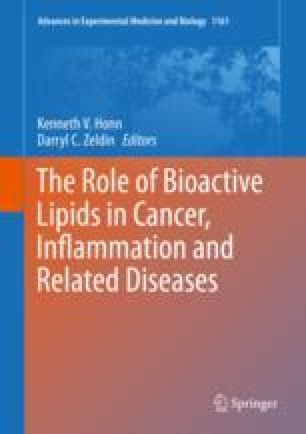 “2-Arachidonoyl-glycerol (2-AG) is an endocannabinoid with anti-inflammatory properties.
“2-Arachidonoyl-glycerol (2-AG) is an endocannabinoid with anti-inflammatory properties.
Blocking 2-AG hydrolysis to enhance CB2 signaling has proven effective in mouse models of inflammation. However, the expression of 2-AG lipases has never been thoroughly investigated in human leukocytes.
Herein, we investigated the expression of seven 2-AG hydrolases by human blood leukocytes and alveolar macrophages (AMs) and found the following protein expression pattern: monoacylglycerol (MAG lipase; eosinophils, AMs, monocytes), carboxylesterase (CES1; monocytes, AMs), palmitoyl-protein thioesterase (PPT1; AMs), α/β-hydrolase domain (ABHD6; mainly AMs), ABHD12 (all), ABHD16A (all), and LYPLA2 (lysophospholipase 2; monocytes, lymphocytes, AMs).
Altogether, our results indicate that human leukocytes are experts at hydrolyzing 2-AG and its metabolites via multiple lipases and probably via a yet-to-be characterized 52 kDa hydrolase. Blocking 2-AG hydrolysis in humans will likely abrogate the ability of human leukocytes to degrade 2-AG and its metabolites and increase their anti-inflammatory effects in vivo.”
https://www.ncbi.nlm.nih.gov/pubmed/31556464
https://jlb.onlinelibrary.wiley.com/doi/abs/10.1002/JLB.3A0919-049RRR

 “Abusive alcohol consumption is a health problem, worldwide.
“Abusive alcohol consumption is a health problem, worldwide.
 “Evidence has been accumulating regarding alterations in components of the endocannabinoid system in patients with psychosis.
“Evidence has been accumulating regarding alterations in components of the endocannabinoid system in patients with psychosis. “A large body of evidence suggests that dietary n-3 polyunsaturated fatty acids (PUFAs), including eicosapentaenoic acid (EPA) and docosahexaenoic acid (DHA), contribute to a reduced inflammatory tone thereby lowering the risk for several chronic and degenerative diseases. Different mechanisms have been proposed to explain these anti-inflammatory effects, including those involving
“A large body of evidence suggests that dietary n-3 polyunsaturated fatty acids (PUFAs), including eicosapentaenoic acid (EPA) and docosahexaenoic acid (DHA), contribute to a reduced inflammatory tone thereby lowering the risk for several chronic and degenerative diseases. Different mechanisms have been proposed to explain these anti-inflammatory effects, including those involving  “In modern lifestyle, stress and Western diets are two major environmental risk factors involved in the etiology of neuropsychiatric disorders. Lifelong interactions between stress, Western diets, and how they can affect brain physiology, remain unknown.
“In modern lifestyle, stress and Western diets are two major environmental risk factors involved in the etiology of neuropsychiatric disorders. Lifelong interactions between stress, Western diets, and how they can affect brain physiology, remain unknown. “Accumulating evidence suggests that diets rich in ω-3 polyunsaturated fatty acids (PUFAs) offer protection against vascular inflammation, neuroinflammation, hypertension, and thrombosis.
“Accumulating evidence suggests that diets rich in ω-3 polyunsaturated fatty acids (PUFAs) offer protection against vascular inflammation, neuroinflammation, hypertension, and thrombosis. “Membrane vesicles (MVs) released from bacteria participate in cell communication and host-pathogen interactions.
“Membrane vesicles (MVs) released from bacteria participate in cell communication and host-pathogen interactions. “Here, we hypothesized that adolescent Δ9-tetrahydrocannabinol (THC) worsens the impact of prenatal maternal immune activation (MIA) on ventral tegmental area (VTA) dopamine cells in rat offspring.
“Here, we hypothesized that adolescent Δ9-tetrahydrocannabinol (THC) worsens the impact of prenatal maternal immune activation (MIA) on ventral tegmental area (VTA) dopamine cells in rat offspring. “This study found that
“This study found that